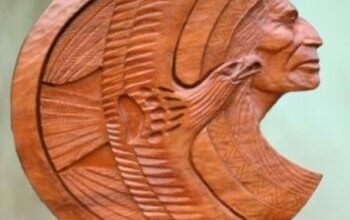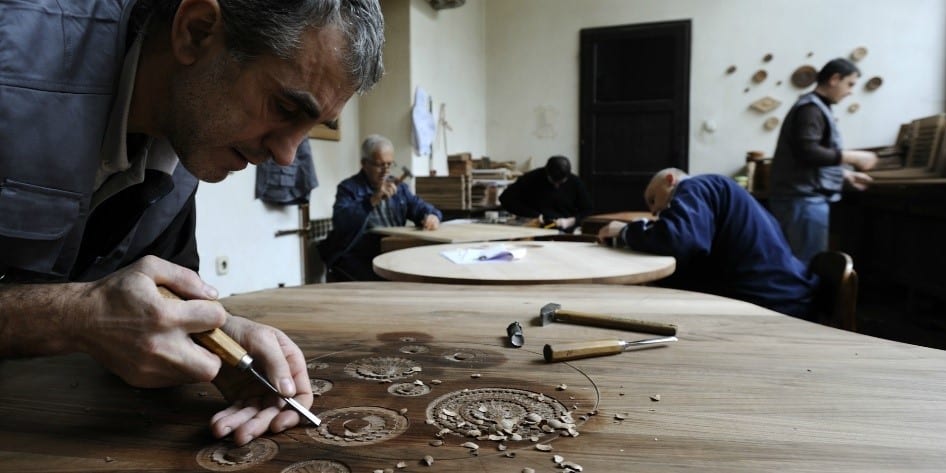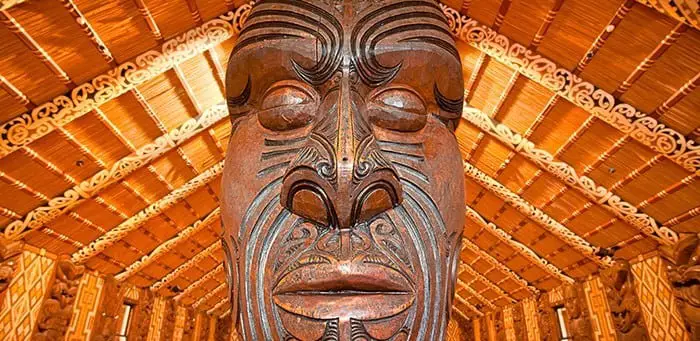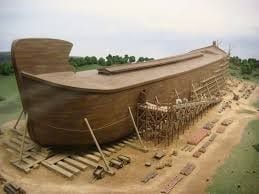Japan is a country that keeps amazing the rest of the world. In this article, we will reveal 7 Japanese woodworking techniques that you’ll surely love to discover!
The combination of innovative and advanced technologies merges with the ancient traditions of the Japanese crafts to put us into an AWW.
Without sacrificing the legacy of their ancestors, the Japanese are confidently paving their way into the new era of the 21st century when finding sustainable ways of living is becoming more relevant than ever before.
And indeed, the world needs to embrace a global approach to understanding the problems caused by the human impact on planet Earth. But that would be impossible if we don’t look back to the past and learn to cherish our roots, just like the Japanese manage to do.
1) Ise Ittobori – Japanese Single Blade Wood Carving Technique
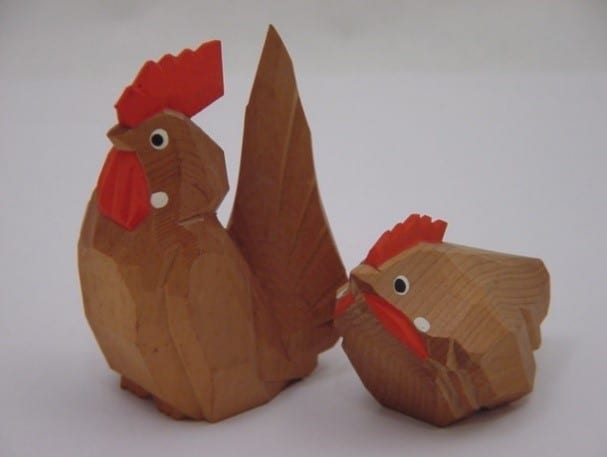
Ise Ittobori is also known as Ise-style knife carving. In fact, Ittobori literally translates into “one-knife carving.”
The technique was first used on scrap wood from the Ise Grand Shrine. The carpenters would simply have fun by making lucky charms from the wastes.
Even though this particular Japanese woodworking technique is associated with the use of a single knife, the very intention behind the name is actually different.
The term single knife carving applies to the sharp, bold, single stroke that accentuates the final cut by bringing a sense of wildness to the final design.
The carvings are rather simplistic but the goal of this technique is to showcase the natural warmth and gentleness of the wood material.
Typically, camphor wood is one of the most commonly utilized material in the Ise Ittobori technique. However, other types of wood are also used, including hardwood varieties.
The harder the wood, the more durable the carving. But most importantly, working with hardwood makes the Ise Ittobori wood carving technique very challenging.
The master woodcarver needs to apply a great force, as well as extreme precision on the material. Nevertheless, the blade must be perfectly sharp in order to conceive the finely carved details.
2) Kigumi – The Ancient Japanese Woodworking Technique of the Shrine Carpenters
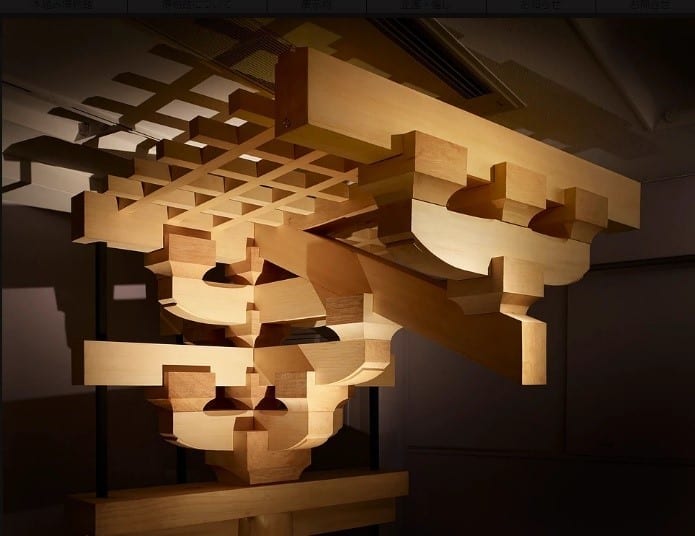
The world-famous Japanese temples and shrines have turned into one of the trademarks of the Country of the Rising Sun.
The unique appearance of these buildings is achieved through years of dedication by generations of Japanese master woodworkers. Thus, for hundreds of years, the Japanese woodworking technique known as Kigumi (“timberwork”), was passed from one talented woodworker to another.
Most noteworthy, Kigumi is the art of constructing without the use of nails. This mind-blowing Japanese joinery technique has survived for over 1000 years.
But what’s more, it is thanks to the genius Kigumi technique that the ancient temples also managed to survive the numerous earthquakes that hit Japan throughout the course of history.
In fact, in the case the Japanese master woodworkers opted for metal nails instead of applying the Kigumi joinery technique, the humid climate in the country would have led to the rust and eventual fail of the buildings.
The experts who carry the ancient traditions of the Kigumi joinery technique are called Miyadaiku. Miyadaiku masters know the secrets of constructing temples and shrines, and their knowledge is highly valued for it is essential for the restoration of the emblematic and sacred buildings.
3) Kigoroshi Woodworking Technique
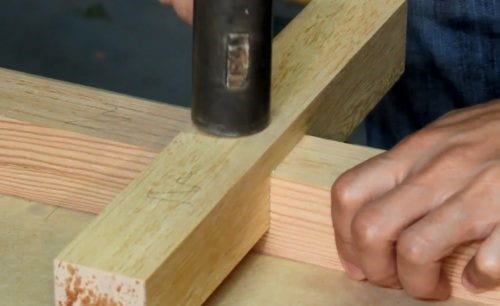
Kigoroshi woodworking technique is part of the incredible Japanese joinery techniques. Kigoroshi is used for the purpose of removing gaps in notched joints.
Typically, Kigoroshi is applied to tenon and mortise joints. However, it can be applied to all kinds of notched joints, as it helps in snug fits.
While the Kigoroshi woodworking technique actually appears rather simplistic, it requires a high dose of precision and patience.
The pressure that has to be applied by using a rounded end of a hammer must be strong enough to compress the appropriate part of the tenon. But more importantly, the pressure must be delicate enough not to damage the wood irreversibly, which is exactly the case with possible cracks due to hitting too hard.
Another important aspect of the Kigoroshi technique is preparing the wood carefully. For this purpose, the mortise needs to be splashed into the water. Thus, by either splashing or simply wiping the wood material with water aids in expanding the compressed wood to its original size.
The Kigoroshi joinery technique is so durable that in the case you ever decide to remove the tightly-fit joints, you can see the very imprint of the one wood piece left over the other.
4) Sasano-Bori – The “Special” Wood Carving Technique

Translated from Japanese, “bori” means “carving.” On the other hand, Sasano is a region in Yonezawa city where traditional dolls are made by utilizing the Sasano-Bori technique.
This intriguing Japanese woodworking technique was well-known by most of the local people in the 17th century. Back in the old days of the history of Yonezawa city, the economy in the region was rather slow. Thus, Yozan Uesugi came up with the idea to promote the carving industry. As a result, the local economy was successfully boosted.
Up-to-date, Sasano-Bori craftsmanship is passed from one talented master to another. The craft can take years to be fully mastered, and great passion and dedication are needed.
The Sasano-Bori technique is often referred to as “the special” wood carving technique because of the use of unique chisels. These special chisels are called Chijire and Sarukiri.
The Sarukiri resembles an axe but actually serves the purpose of a knife. Thus, fine, detailed carvings come to life.
Nevertheless, the Sasano-bori technique is applied to single pieces of wood which maximize the smart use of the wood material but also puts the master woodcarvers’ skills and nerves to a test that only the most patient perfectionists can pass.
5) Agokaki Woodworking Technique
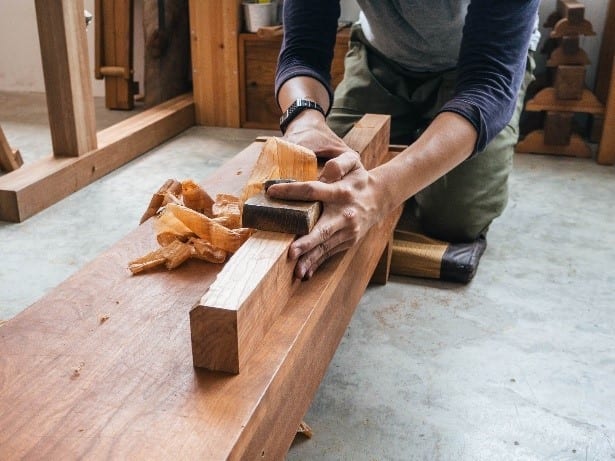
Agokaki is one of the many Japanese joinery woodworking techniques that keep stunning the world.
With this particular technique, the joint is used in order to attach a horizontal timber.
To be more specific, the Agokaki technique serves to attach the timber to the very face of a pillar. Nevertheless, the horizontal timber can also be attached to the fronts of a square post.
For a start, precise cuts need to be made on both of the corners of the post. Furthermore, the cuts are made on the same side of the post with the aim to leave an uncut center.
Next, the horizontal timber gets one notch cut for the purpose of pounding it secure and tight, right between the 2 notched corners. It almost seems as if the horizontal timber can “hug” the pillar. That’s thanks to the clever way the uncut parts match the initially cut corner gaps.
While the Agokaki technique is not the most beginner-friendly one to try out, there are numerous smart and simple Japanese joinery techniques to adapt even if you are just at the very beginning of your woodworking journey.
6) Iwatsuki Doll Woodworking Techniques

The Iwatsuki ward in Saitama prefecture, Japan, has become the birthplace of the Iwatsuki dolls.
Iwatsuki dolls are unique for their round faces, smooth skin, shiny, silky hair, and big, lively eyes that contribute to a particularly adorable appearance. Nevertheless, the brilliant colors allure the eyes, leaving the contemplators curiously impressed.
The history of making Iwatsuki dolls dates back to the Edo period that started in 1603. The Iwatsuki ward has always been naturally abundant in paulownia trees, and this provided a perfect environment for the flourishing of woodworking in the area.
Paulownia trees are often referred to princess or empress trees, as well as the trees of the future due to their extremely fast growth and high-quality of the wood material.
One of the amazing woodworking techniques that were developed by the Japanese Iwatsuki dolls makers is the so-called tosogashira technique.
This peculiar technique utilizes paulownia sawdust, and it is still popular in the Country of the Rising Sun. The “toso” ends up as a kind of clay after the paulownia sawdust is mixed with fresh wheat gluten that acts like glue.
Once the mixture is carefully stirred, it is placed into a mold and left to dry well. During the process of making the notorious Iwatsuki dolls, the okiage carving technique also plays a key role.
Okiage is a meticulous relief carving technique that utilizes the power of small knives in order to create fine, tiny details. In the case of making Iwatsuki dolls, the okiage technique is applied to create the lips and eyes.
Other famous Japanese dolls produced in the Iwatuski area include the Hina dolls, the Gotatsu dolls, and the Ukiyoe dolls.
7) Hakone’s Yosegi-zaiku – Japanese Woodworking “Marquetry” Technique
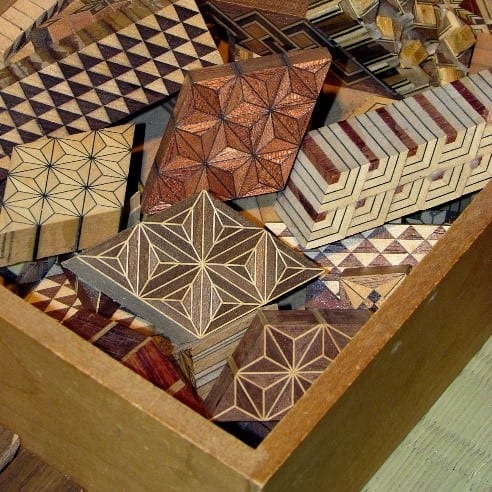
The art of traditional Japanese marquetry known as Yosegi-zaiku originated during the Edo period, similarly to the case with the skilfully detailed Iwatsuki dolls we discussed above.
Certainly, the Hakone town in Kanagawa has contributed immensely to the development of the Yosegi-zaiku craft. Being naturally abundant in different types of trees, the Yosegi-zaiku wood artistry thrived by the accessibility of over 22 types of wood available to the local artisans.
Some of these woods include walnut, ash, and rosewood, to name a few. Most importantly, the diversity of wood is crucial for the art of Yosegi-zaiku since no stains or dyes are applied.
Instead, the artisans rely on the different colors and texture of the wood.
As a result of the masterful inlaying of various woods, incredible patterns and shapes come to life. Thus, Yosegi-zaiki woodworking marquetry technique is applied to decorate numerous objects, such as furniture, chests, vases, trays, and jewelry boxes, among others.
The Takeaway
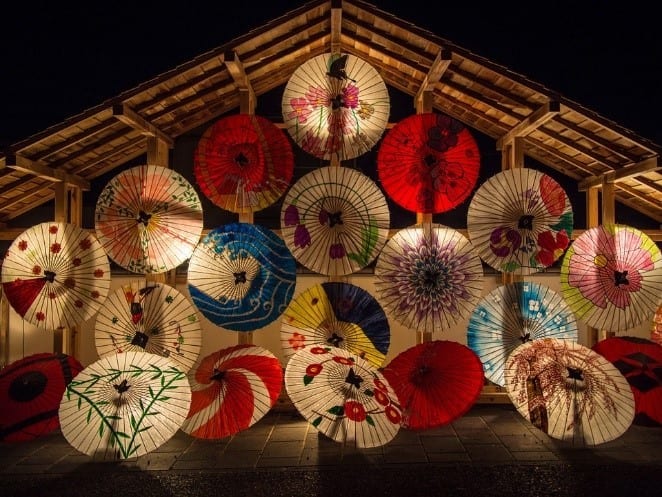
George Nakashima, whose grandfather was a samurai warrior, is an American-Japanese woodworker who became famous as one of the contemporary practitioners of the traditional Japanese woodworking techniques.
In his book, The Soul of a Tree, George Nakashima shares the following impressions after observing the craftsmanship of the Japanese master woodworkers: “When someone would get a piece of work done, with the joints fitted perfectly and the proportions just right, he’d put it someplace where it could be seen. And everybody would gather around and praise him for his work. There was that sort of attitude. There wasn’t any jealousy. It was just an appreciation of fine work.”
We hope that we have managed to contaminate you with the incredible sense of Japanese wisdom and beauty. Share our compilation of 7 Japanese woodworking techniques with other connoisseurs of fine handicrafts and help us keep the ancient legacy of the gifted woodworkers around the world alive!

